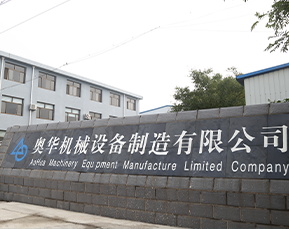 Afrikaans
Afrikaans  Albanian
Albanian  Amharic
Amharic  Arabic
Arabic  Armenian
Armenian  Azerbaijani
Azerbaijani  Basque
Basque  Belarusian
Belarusian  Bengali
Bengali  Bosnian
Bosnian  Bulgarian
Bulgarian  Catalan
Catalan  Cebuano
Cebuano  Corsican
Corsican  Croatian
Croatian  Czech
Czech  Danish
Danish  Dutch
Dutch  English
English  Esperanto
Esperanto  Estonian
Estonian  Finnish
Finnish  French
French  Frisian
Frisian  Galician
Galician  Georgian
Georgian  German
German  Greek
Greek  Gujarati
Gujarati  Haitian Creole
Haitian Creole  hausa
hausa  hawaiian
hawaiian  Hebrew
Hebrew  Hindi
Hindi  Miao
Miao  Hungarian
Hungarian  Icelandic
Icelandic  igbo
igbo  Indonesian
Indonesian  irish
irish  Italian
Italian  Japanese
Japanese  Javanese
Javanese  Kannada
Kannada  kazakh
kazakh  Khmer
Khmer  Rwandese
Rwandese  Korean
Korean  Kurdish
Kurdish  Kyrgyz
Kyrgyz  Lao
Lao  Latin
Latin  Latvian
Latvian  Lithuanian
Lithuanian  Luxembourgish
Luxembourgish  Macedonian
Macedonian  Malgashi
Malgashi  Malay
Malay  Malayalam
Malayalam  Maltese
Maltese  Maori
Maori  Marathi
Marathi  Mongolian
Mongolian  Myanmar
Myanmar  Nepali
Nepali  Norwegian
Norwegian  Norwegian
Norwegian  Occitan
Occitan  Pashto
Pashto  Persian
Persian  Polish
Polish  Portuguese
Portuguese  Punjabi
Punjabi  Romanian
Romanian  Russian
Russian  Samoan
Samoan  Scottish Gaelic
Scottish Gaelic  Serbian
Serbian  Sesotho
Sesotho  Shona
Shona  Sindhi
Sindhi  Sinhala
Sinhala  Slovak
Slovak  Slovenian
Slovenian  Somali
Somali  Spanish
Spanish  Sundanese
Sundanese  Swahili
Swahili  Swedish
Swedish  Tagalog
Tagalog  Tajik
Tajik  Tamil
Tamil  Tatar
Tatar  Telugu
Telugu  Thai
Thai  Turkish
Turkish  Turkmen
Turkmen  Ukrainian
Ukrainian  Urdu
Urdu  Uighur
Uighur  Uzbek
Uzbek  Vietnamese
Vietnamese  Welsh
Welsh  Bantu
Bantu  Yiddish
Yiddish  Yoruba
Yoruba  Zulu
Zulu Understanding Conveyor Belt Idler Systems for Enhanced Material Handling Efficiency
Understanding Conveyor Belt Idlers
Conveyor belt idlers are critical components in the material handling industry, serving essential functions that ensure the efficiency and reliability of conveyor systems. These components support the belt as it moves, guiding it along the desired path and preventing sagging or misalignment. Understanding the importance and functionality of idlers can greatly enhance the performance of conveyor systems across various applications.
Idlers are typically cylindrical rollers mounted on frames, arranged at regular intervals along the conveyor belt. They are designed to support the weight of the belt and the material being transported, redistributing the load to prevent excessive stress on any single part of the system. This load-bearing function is crucial in reducing wear and tear on both the conveyor belt and its structural components.
One of the main types of idlers is the troughing idler, which is used to form a trough shape that helps contain the material being conveyed. This design minimizes spillage and maximizes load capacity. Additionally, return idlers are used to support the empty belt as it returns to the loading point, ensuring stability and preventing damage during this phase of movement. The effective integration of these various types of idlers is fundamental to maintaining a smooth and continuous operation.
conveyor belt idlers

The materials used for idler construction vary, including steel, plastic, and rubber, depending on the specific application requirements. Steel is favored for heavy-duty applications due to its durability and strength, while lightweight plastic idlers may be necessary for less demanding conveyor systems. Moreover, rubber-coated idlers can help absorb vibrations and reduce noise, contributing to a more efficient workplace.
Proper maintenance of conveyor belt idlers is essential for optimal performance. Regular inspections can identify wear, misalignment, or damage, allowing for timely repairs or replacements. Neglecting idler maintenance can lead to significant operational issues, including belt misalignment, increased friction, and ultimately, premature failures of the entire system.
Incorporating advanced technologies, such as self-aligning idlers and sensor-equipped systems, can enhance the functionality of conventional idlers. These technologies can automatically adjust the position of the idlers, reducing the likelihood of belt misalignment and improving overall efficiency. Furthermore, real-time monitoring can provide insights into the health of the conveyor system, leading to proactive maintenance strategies.
In conclusion, conveyor belt idlers are vital elements that contribute significantly to the overall performance and longevity of conveyor systems. Their role in supporting and guiding the conveyor belt is indispensable in various industries, including mining, manufacturing, and logistics. Investing in high-quality idlers and maintaining them regularly can lead to enhanced operational efficiency, reduced downtime, and increased productivity in material handling processes.
-
Revolutionizing Conveyor Reliability with Advanced Rubber Lagging PulleysNewsJul.22,2025
-
Powering Precision and Durability with Expert Manufacturers of Conveyor ComponentsNewsJul.22,2025
-
Optimizing Conveyor Systems with Advanced Conveyor AccessoriesNewsJul.22,2025
-
Maximize Conveyor Efficiency with Quality Conveyor Idler PulleysNewsJul.22,2025
-
Future-Proof Your Conveyor System with High-Performance Polyurethane RollerNewsJul.22,2025
-
Driving Efficiency Forward with Quality Idlers and RollersNewsJul.22,2025





























